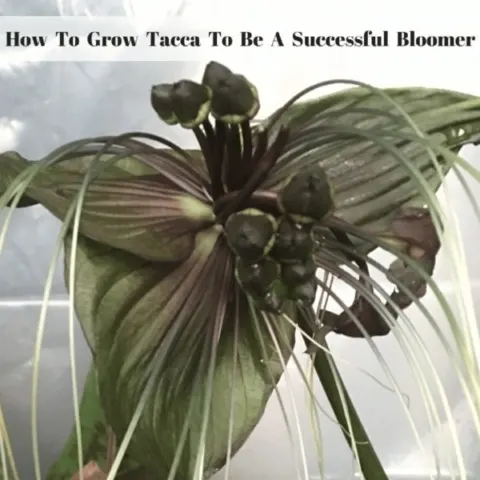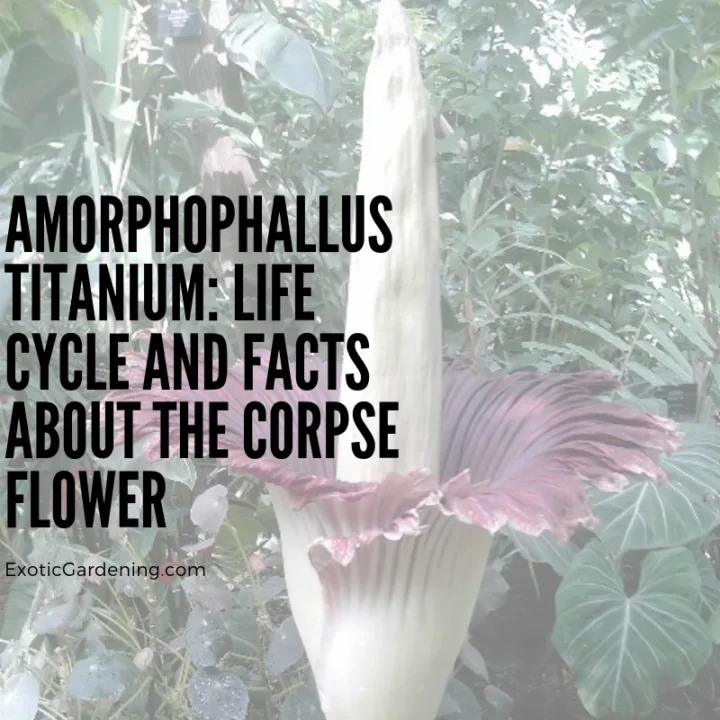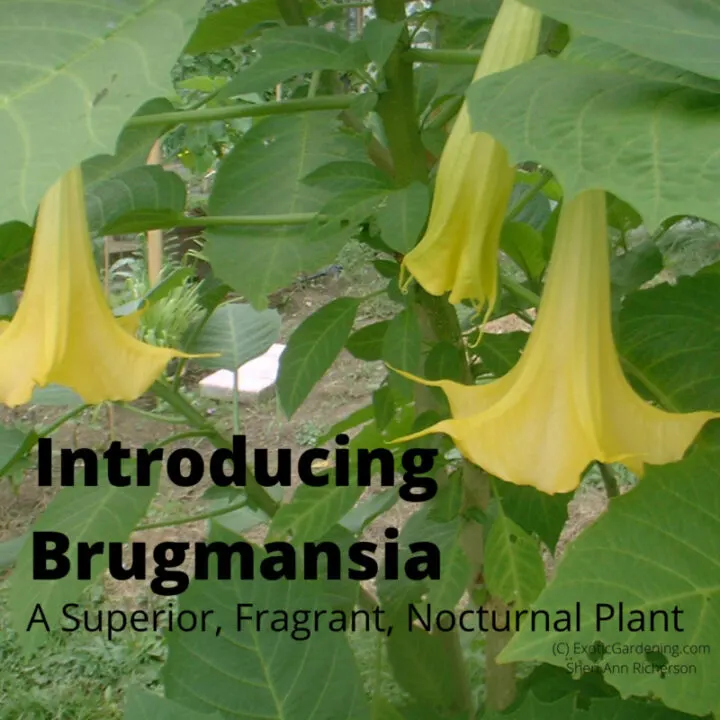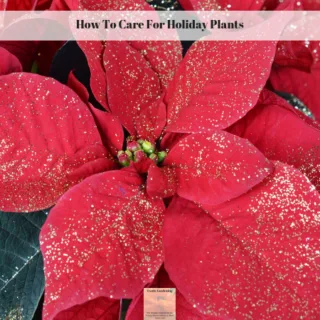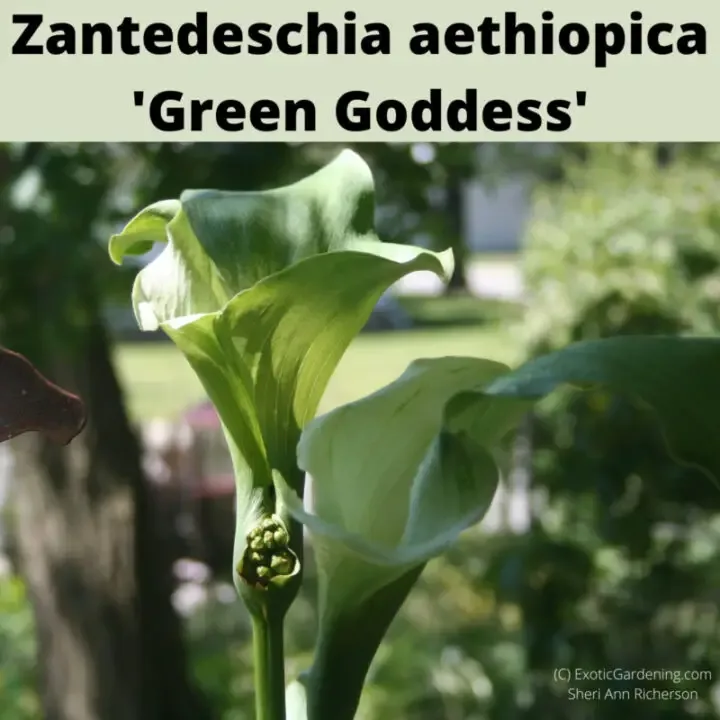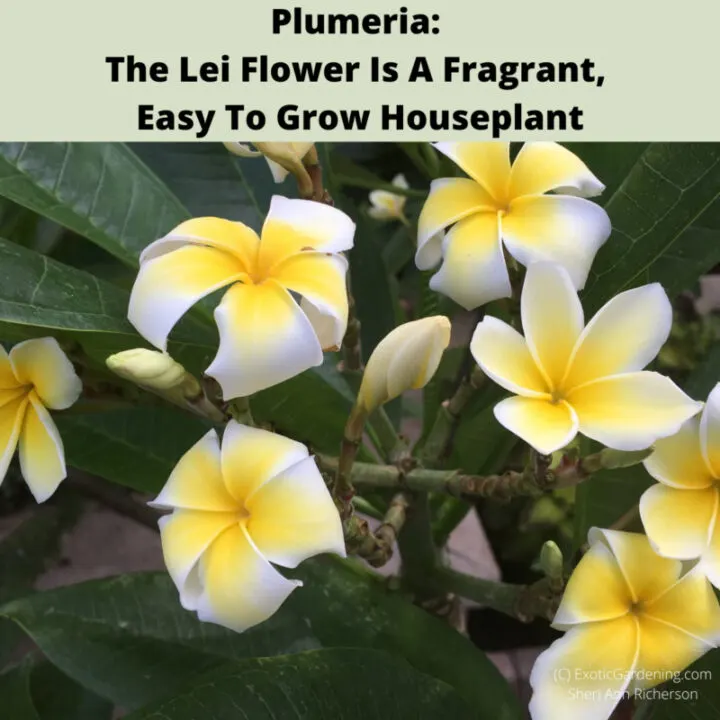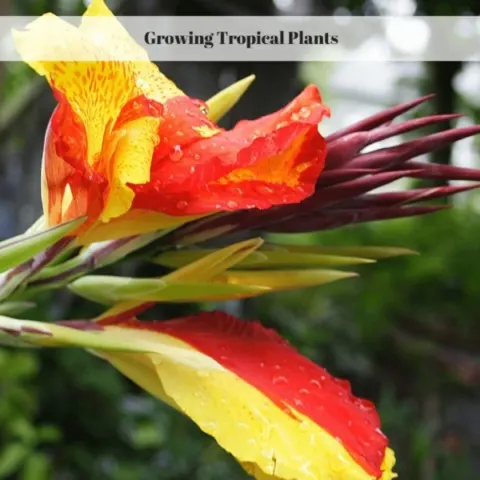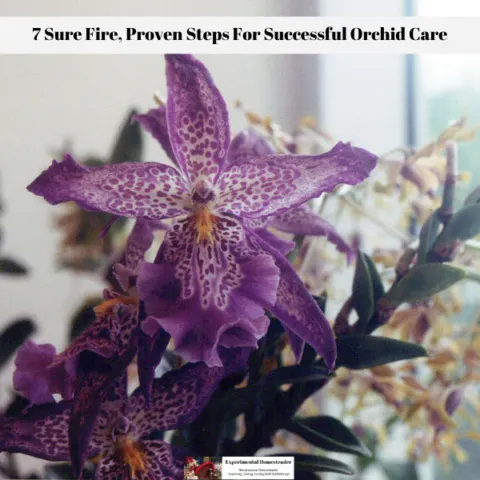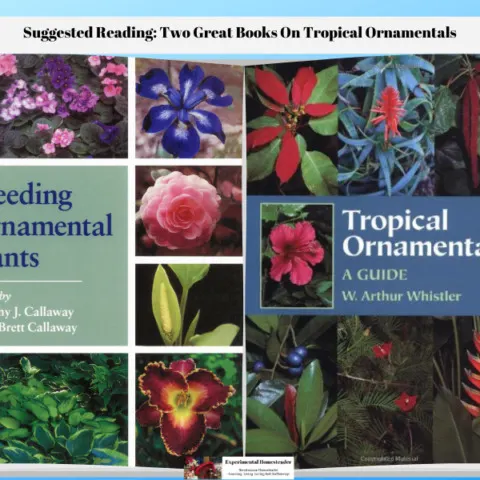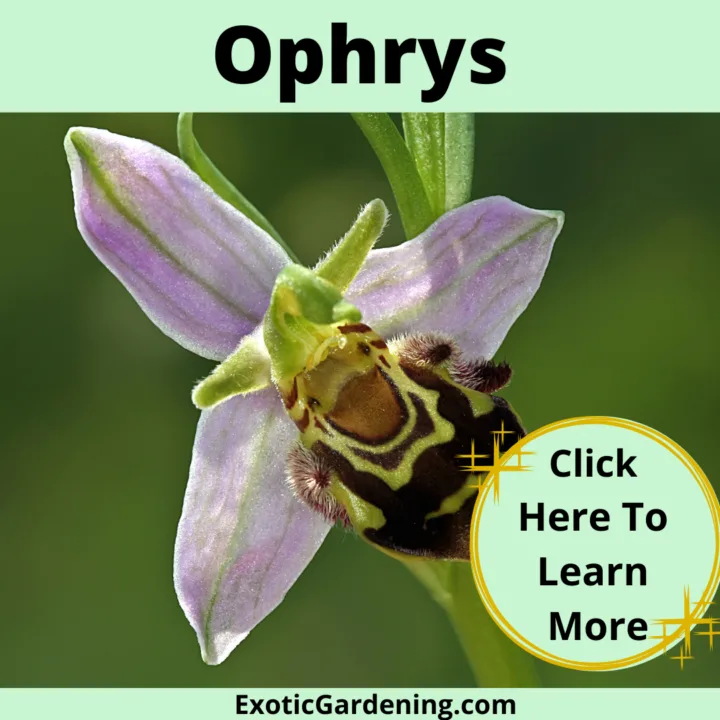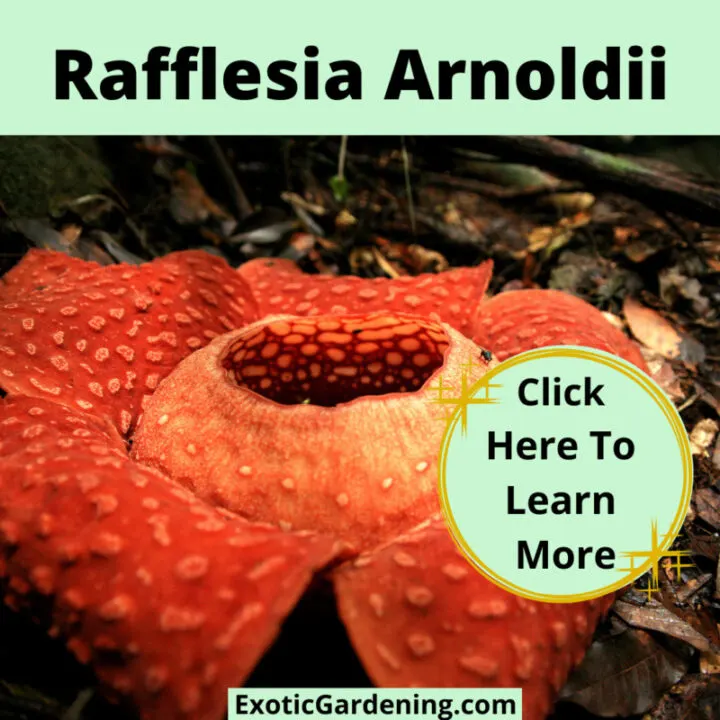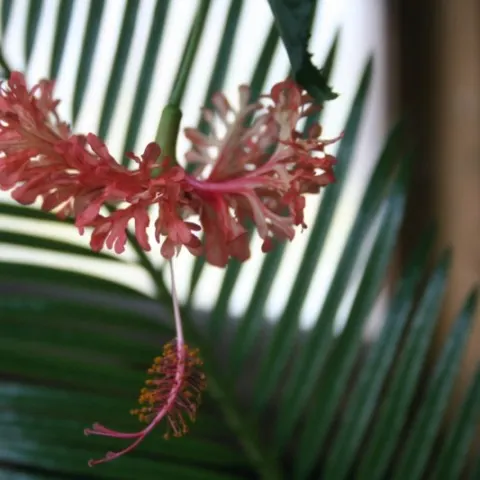Night blooming plants are a great way to add that extra spooky touch to your Halloween festivities.
The flowers will last from one evening to the next morning and appear to glow in the dark, which makes them perfect for Halloween decorations.
Night blooming plants are beautiful, but some of them have an interesting secret.
They have a way of absorbing light during the day and then releasing it at night to attract pollinators.
It is not just the flowers that are glowing, the leaves are too!
Plants produce their own form of bioluminescence.
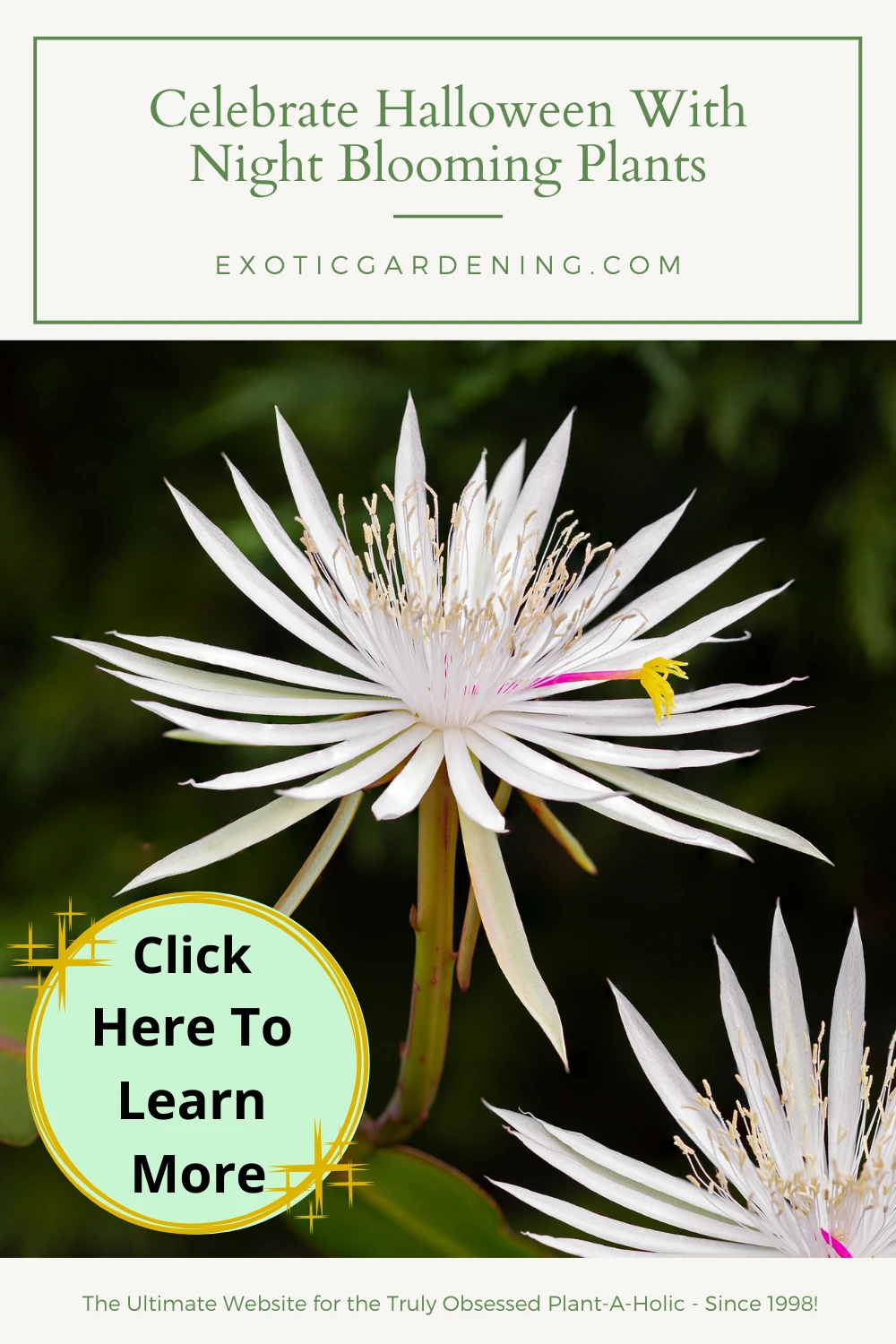
The Idea To Celebrate Halloween With Night Blooming Plants
Up until a couple of years ago, I assumed that all plants bloomed in the day.
What a suprise it was for me one morning to open my door and discovered a bloom on my Angel Trumpet.
Later in the day, I noticed the bloom was gone.
Again, wrongly, I assumed that I had missed the bloom the day before.
Needless to say, it took me quite a while to figure out that these beauties only bloom after sundown, and that their bloom would fade every morning.
So, I decided there must be more of these tropical night bloomers out there somewhere just waiting to be discovered, and brought home to my garden.
I knew these night blooming beauties would also be ideal for Halloween decorating.
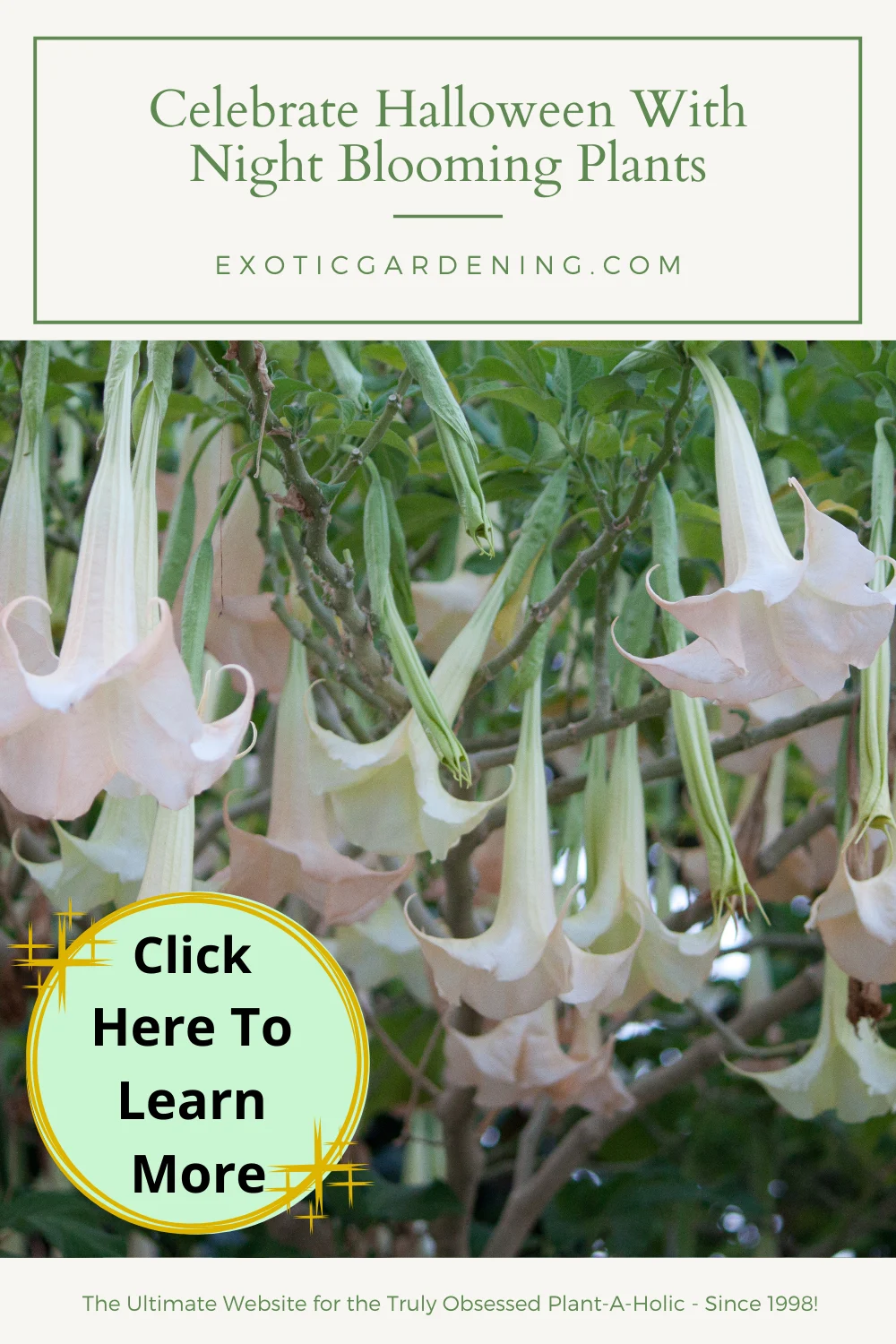
Benefits Of Night Blooming Plants: Embracing the Magic of Evening Gardens
Night blooming plants offer a unique enchantment to your garden, and their benefits extend beyond their captivating beauty.
Let's explore why these plants are a must-have for those who appreciate the serenity of evening gardens:
1. Aromatic Ambiance: Night blooming plants are renowned for their aromatic flowers that come to life as the day fades into night. Imagine stepping into your garden as the sun sets, and being greeted by a symphony of scents. These fragrant blooms fill the air with delightful perfumes, turning your garden into a sensory oasis. Whether it's the sweet scent of night blooming Jasmine or the exotic fragrance of Queen Of The Night, these plants elevate the evening atmosphere.
2. Nectar for Nocturnal Visitors: Beyond their delightful fragrances, night blooming plants play a crucial role in attracting and nourishing nocturnal creatures. Bats and moths, two of the most enchanting denizens of the night, are drawn to these plants' nectar-rich flowers. As they sip nectar, they inadvertently become pollinators, benefiting not only the night bloomers but also the rest of your garden. It's a beautiful symbiotic relationship that adds depth to your garden's ecosystem.
3. A Tranquil Evening Escape: The evening garden is a sanctuary for those seeking solace and tranquility after a long day's work. It provides a serene backdrop for unwinding and reconnecting with nature. As the stars twinkle overhead and the night blooming plants come to life, you can escape the hustle and bustle of the day. The soft rustling of leaves, the gentle fragrance in the air, and the occasional visit from a bat or moth create a sense of peace that's hard to find during daylight hours.
4. Observing Nocturnal Wildlife: Night blooming plants not only attract pollinators but also offer a unique opportunity to observe nocturnal wildlife. Creatures like owls, raccoons, and opossums come out to play under the cover of darkness. These elusive animals are a delight to watch and connect with, and they add a sense of wonder to your evening garden. It's a chance to appreciate the beauty of nature's nightlife that often goes unnoticed during the day.
Here are a few night blooming plants I recommend.
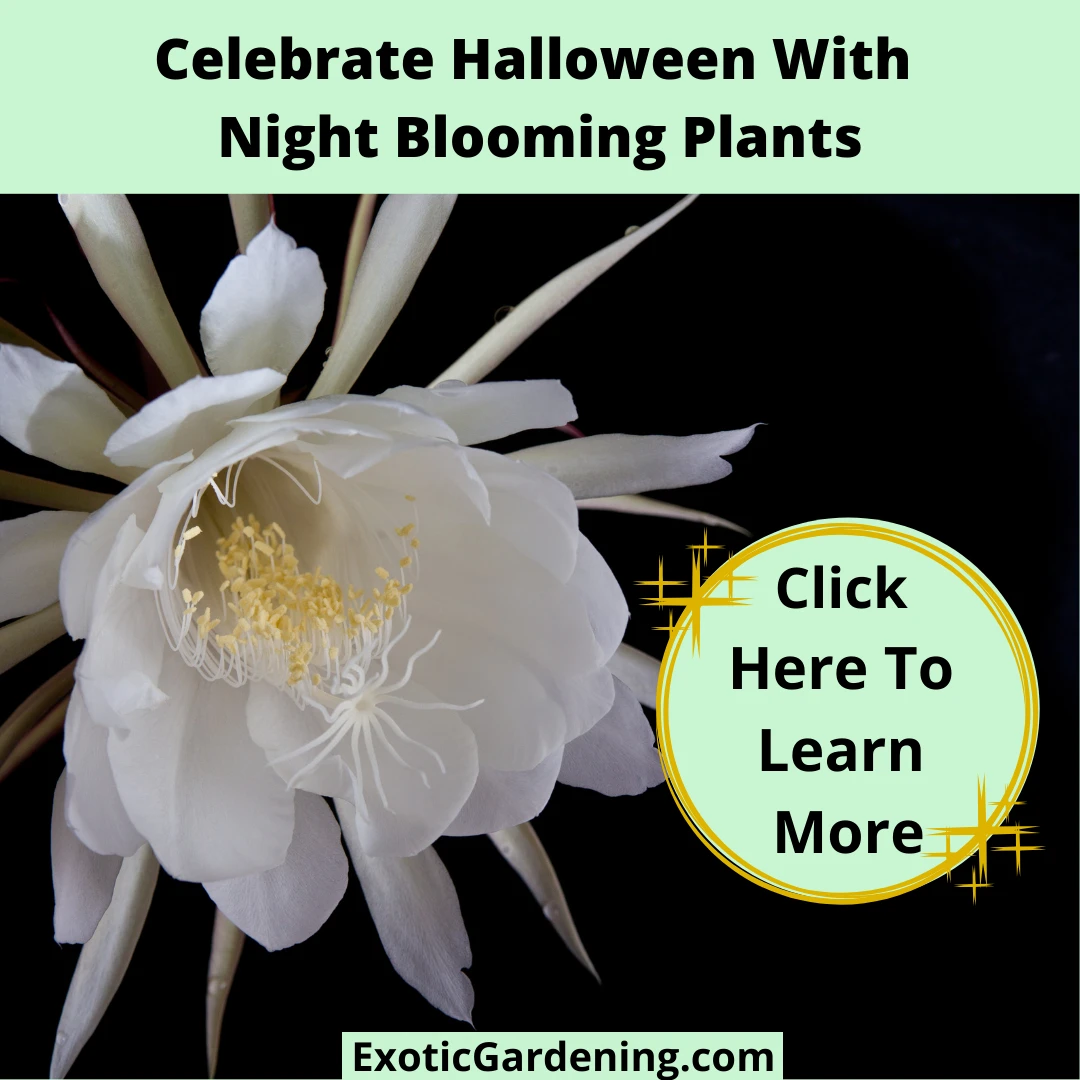
Exploring the Enigmatic "Queen Of The Night" Cactus
When it comes to night blooming plants, there's one mysterious member of the Cactus family that stands out like a star in the night sky – the "Queen Of The Night."
As I continued my journey of discovery in the realm of night blooming flora, I encountered this beguiling beauty, also known by its scientific name, Selenicereus.
A Cactus of Intrigue:
The night blooming Cereus, a close relative of the "Queen Of The Night," had eluded my efforts to coax it into bloom for many years.
But let me assure you, once I did get it to bloom the reward of witnessing its blossoms was nothing short of extraordinary.
Their ethereal beauty is a testament to the wonders of the plant kingdom.
The Midnight Monarch:
Now, let's talk about the "Queen Of The Night" herself.
As her name suggests, she reigns supreme in the world of nocturnal blooms.
This cactus, with its intricate botanical name Selenicereus, unfolds her enigmatic petals during the bewitching hours of 9 pm to 3 am.
Yes, you read that right – these captivating flowers choose to reveal their splendor when most of the world slumbers.
A Feast for Nighttime Pollinators:
This peculiar blooming schedule isn't without reason.
It aligns perfectly with the activity of some of our most intriguing nighttime friends – bats.
Bats are the ultimate night owls, and their presence in your garden can turn it into a scene straight out of a Halloween tale.
These winged creatures are not only fascinating but also crucial for pollinating various plants, including the "Queen Of The Night."
Halloween Decor Inspiration:
Now, let's get to the exciting part for Halloween enthusiasts.
Since bats are known to be symbols of Halloween, having a "Queen Of The Night" cactus in your garden is like rolling out the red carpet for these spooky yet captivating creatures.
Imagine your garden bathed in moonlight, with the enchanting silhouette of this cactus and its exquisite, nocturnal blooms surrounded by bats.
It's a scene that could rival any Halloween decor you can think of, creating an atmosphere of mystery and allure.
The Allure of the "Queen Of The Night":
What makes the "Queen Of The Night" even more remarkable is the sheer elegance of her flowers.
Delicate, pristine white petals unfurl from their slumber, exuding an otherworldly charm.
Their intricate structure and the way they seem to glow in the moonlight are a testament to the beauty that blooms under the cover of darkness.
So, as you plan your garden and decorative elements for Halloween, don't forget to consider the "Queen Of The Night."
Her presence can turn your garden into a haven for bats and a bewitching spectacle that celebrates the magic of the night.
It's a living enchantment that adds a touch of mystery and wonder to your outdoor space.
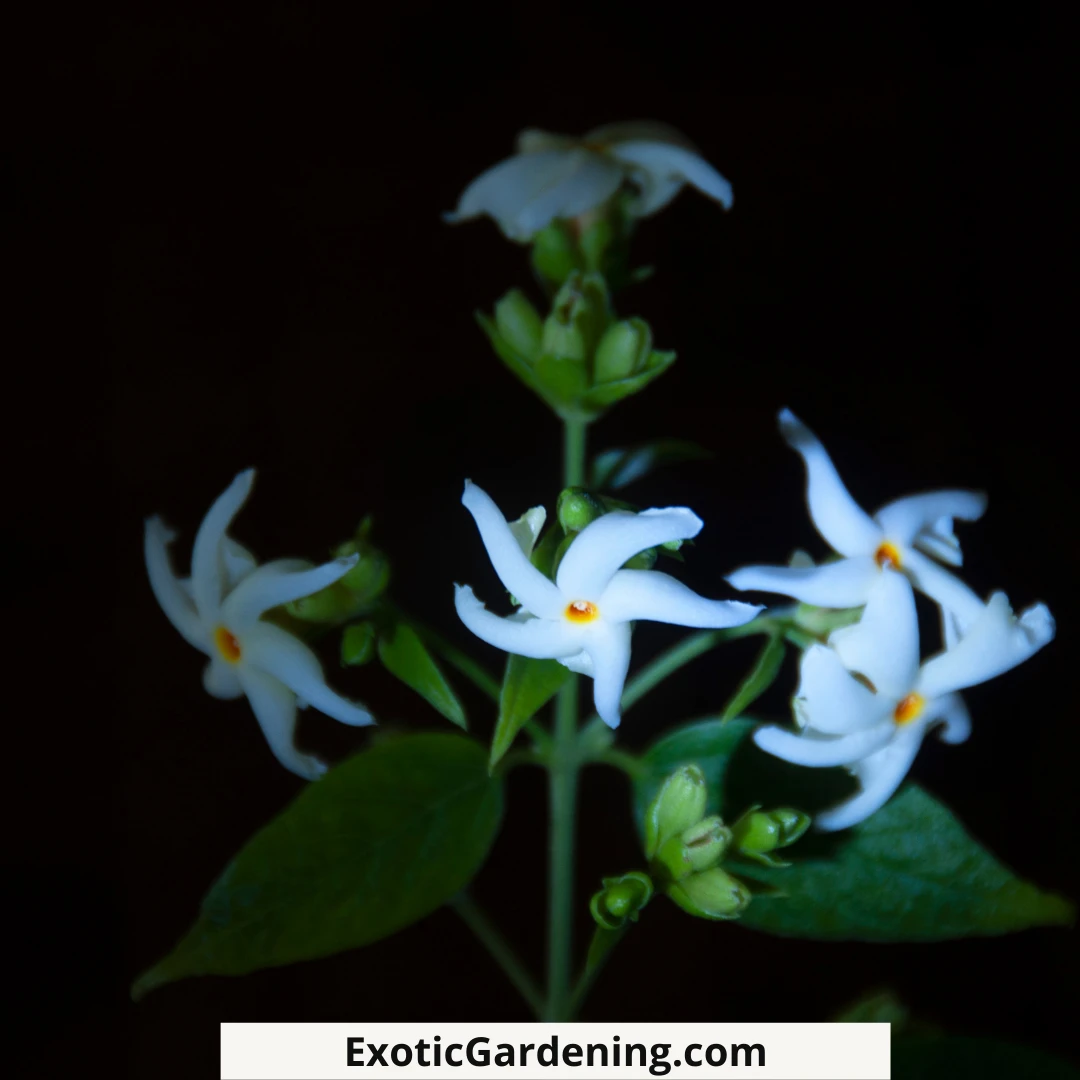
The Alluring Night Blooming Jasmine: A Fragrant Gift from the Night
In the realm of night blooming plants, one gem that's impossible to overlook is the night blooming Jasmine, scientifically known as Cestrum Nocturnum.
While it may share its name with its daytime counterpart, this mystical beauty unfolds its charms exclusively under the vast canvas of starry skies.
A Nighttime Symphony of Fragrance:
Picture this: a warm summer night, a gentle breeze, and the scent of night blooming Jasmine permeating the air.
It's a sensory experience like no other.
These Jasmine flowers are, in many ways, similar to their daytime counterparts, but with one crucial difference – their fragrance is intensified by the moon's soft glow.
A Journey of Discovery:
I vividly remember when I first penned this article.
The night blooming Jasmine was a plant I'd heard of but had never laid eyes on.
It existed in my imagination as a promise of fragrant, moonlit nights.
It was a plant I was determined to bring into my garden, to create a haven for nocturnal beauty and aroma.
Cultivating Nighttime Magic:
The journey to cultivate night blooming Jasmine from seed was an adventure in patience and dedication.
But like most treasures in life, the reward was well worth the effort.
As these delicate plants grew and flourished, they began to reveal their enchanting secret – the petite, star-shaped flowers that exude an exquisite fragrance despite their size.
A Symphony in Clusters:
One fascinating aspect of night blooming Jasmine is its penchant for blooming in small clusters.
These clusters are a sight to behold, creating a visual and olfactory masterpiece in your garden.
The fragrance, when concentrated in these clusters, can be almost intoxicating, filling the surrounding air with an almost otherworldly aroma.
An Indoor Ambrosia:
For those who wish to bring the magic of night blooming Jasmine indoors, be prepared for a sensory indulgence like no other.
However, a word of caution – the fragrance can be so intense when the flowers bloom in clusters that it may border on overpowering when grown indoors.
But if you have a well-ventilated room or a garden room, this plant can transform your indoor space into a fragrant paradise.
The night blooming Jasmine is not just a plant; it's a conduit to a world of nighttime enchantment.
It beckons you to savor the gentle caress of a summer night, to bask in the ethereal fragrance that only the darkness can intensify.
As you consider adding it to your garden, know that you are inviting a piece of the night sky, complete with its celestial scent, into your outdoor sanctuary.
It's a gift from the nocturnal world, a reminder that beauty and fragrance thrive under the starry canopy of the night.
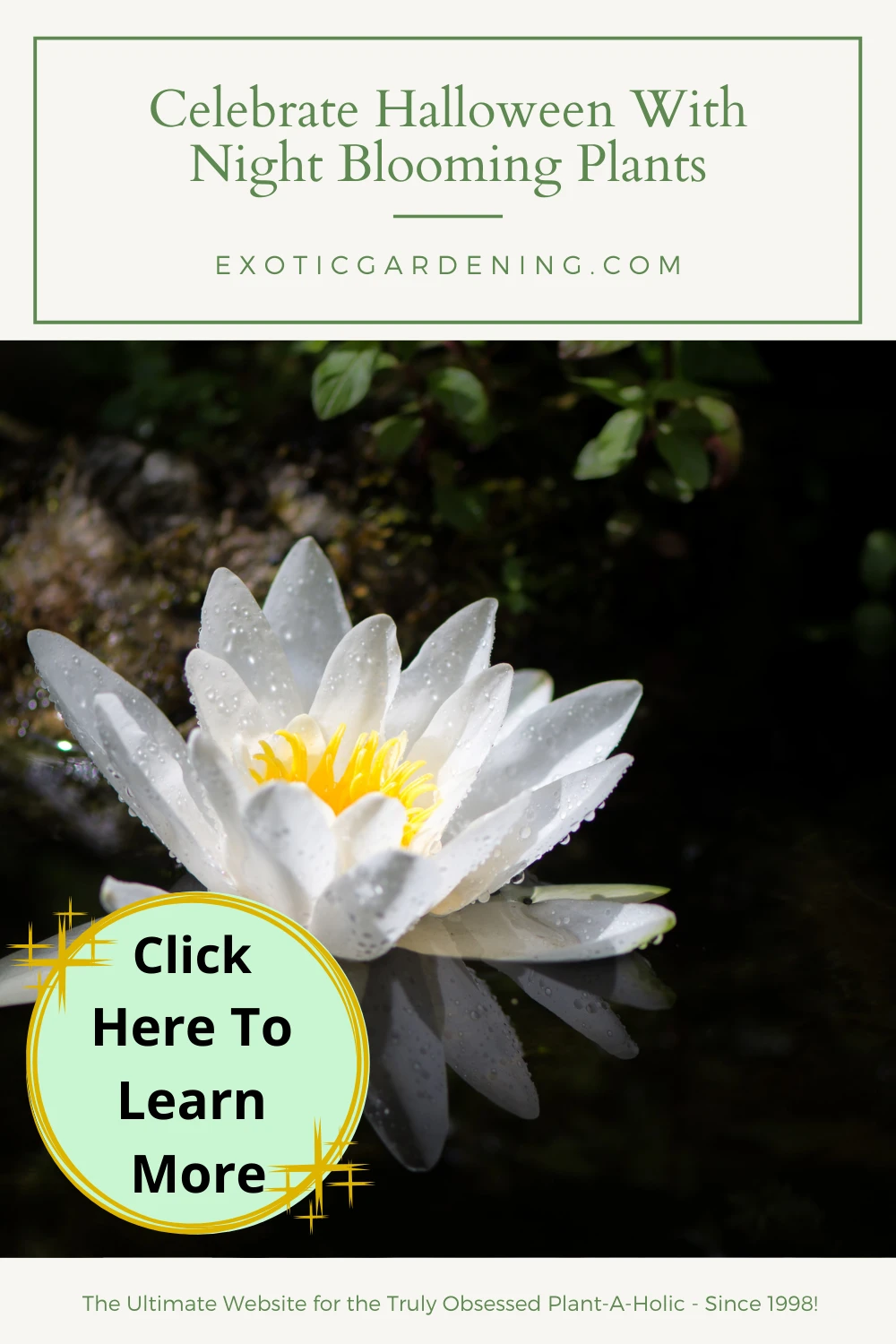
Enchanting Night Blooming Water Lilies: Illuminating Your Water Garden Under Moonlight
For those fortunate enough to have a water garden, the inclusion of night blooming water lilies is nothing short of transformative.
These aquatic wonders have a unique allure, and they hold the power to turn your water garden into a moonlit paradise.
A Moonlight Garden Oasis:
Water gardens possess a certain magic, and under the glow of the moon, they become even more enchanting.
Picture the stillness of the water, the reflection of the moon's silvery light, and the delicate petals of night blooming water lilies unfurling in response to the night's call.
It's a scene that invokes a sense of serenity and wonder.
A Colorful Nighttime Palette:
Tropical night blooming water lilies are not just limited to the classic white variety, although their pristine petals are captivating in their own right.
These aquatic beauties also come in shades of red, blue, and pink.
These vibrant hues, set against the backdrop of moonlight, can add a mesmerizing splash of color to your night garden, creating a visual symphony that's truly magical.
Pond Lights: Adding a Splash of Color:
To enhance the visual spectacle of your night blooming water lilies, consider the addition of pond lights.
These subtle yet vibrant lights can cast a gentle, ethereal glow upon your aquatic garden, highlighting the intricate details of the lilies' blooms and creating an ambiance that's nothing short of enchanting.
It's like having your own private light show on the water's surface.
The Mystique of Pond Fog:
But we're not done with the enchantment just yet.
To elevate the ambiance further, don't forget to add a pond fogger.
These ingenious devices produce a delicate mist that hovers above the water's surface, creating an almost dreamlike atmosphere.
When combined with pond lights, it's as if your garden is shrouded in a veil of magic, transporting you to a world of fantasy and intrigue.
Floating Pond Foggers with LED Lights: A Personal Favorite
I must share my personal experience here.
I have a floating pond fogger with LED lights, and I absolutely love it.
The way it bathes my water garden in a soft, mystical glow is nothing short of mesmerizing.
It adds a touch of whimsy and romance to the setting, making it an ideal addition to any night garden.
Common Plants as Nighttime Companions:
As you revel in the beauty of your night blooming water lilies, consider incorporating common plants as fill-ins to complement the tropical treasures.
These fill-ins can include white or silver-colored plants that reflect the moonlight, adding a soft, silvery glow to your garden's walkways.
Dusty Miller, with its silver leaves, is an excellent choice for this purpose, and it can serve as an elegant edge plant.
Additionally, mixing in a few brightly colored impatiens, along with white varieties, can create a striking border that's equally enchanting during the day and night.
Incorporating night blooming water lilies and these complementary elements into your water garden not only adds a touch of elegance but also transforms your outdoor space into a nocturnal wonderland.
It's an invitation to bask in the gentle embrace of the moonlight and revel in the natural beauty that comes alive under its soft, silvery glow.

The Enchanting Glow of Plants with White or Silver Foliage: Illuminating Your Nighttime Garden
In the realm of nighttime gardens, there's a secret weapon that can enhance the ethereal ambiance – plants with white or silver foliage.
These botanical gems possess a unique quality that allows them to shimmer under the gentle caress of moonlight, transforming your garden into a mesmerizing dreamscape.
Moonlight as a Garden Walkway Marker:
Imagine strolling through your garden on a tranquil night, guided by the soft, silvery glow of plants with white or silver foliage.
These natural markers delineate your pathways with a subtle luminance, ensuring that you navigate your garden with ease and grace.
It's a practical and enchanting solution to illuminate your outdoor space.
Dusty Miller: A Celestial Beauty:
Among the stars of the night garden, the common Dusty Miller (Senecio cineraria) stands out like a radiant moonbeam.
Its foliage is a striking silver-gray, and this unassuming plant has the remarkable ability to reflect the moonlight like no other.
The silver leaves of the Dusty Miller shimmer in the darkness, casting a delicate, silvery glow that's both soothing and captivating.
The Perfect Edge Plant:
What makes Dusty Miller even more valuable in your night garden is its versatility.
The size of the plant is just right to serve as an elegant edge plant.
When planted along the borders of your garden pathways, it not only reflects the moonlight but also defines the paths with an air of sophistication.
The silvery leaves create a subtle contrast against the darker foliage of other plants, adding depth and dimension to your garden.
Other Complementing Plants:
While Dusty Miller is a star performer, there are other white or silver-colored plants that can join the celestial dance in your night garden.
Consider incorporating Silver Mound (Artemisia schmidtiana) with its finely textured silver leaves or Lamb's Ear (Stachys byzantina) with its soft, velvety silver foliage.
These plants, like Dusty Miller, possess the ability to transform moonlight into a breathtaking display of radiance.
Creating a Moonlit Masterpiece:
As you plan your night garden, think of these white and silver-foliaged plants as your canvas.
Their reflective beauty, when strategically placed along your garden pathways, not only guides your steps but also creates a visual spectacle that's both enchanting and tranquil.
It's a living work of art that showcases the subtle beauty of nature under the serene glow of the moon.
Incorporating plants with white or silver foliage into your night garden design is like painting with moonlight.
It adds an element of enchantment that transcends the ordinary, turning your outdoor space into a haven of celestial beauty.
So, as you embark on your nighttime gardening adventure, let these luminous plants be your guiding stars, casting their silvery glow upon your garden walkways.
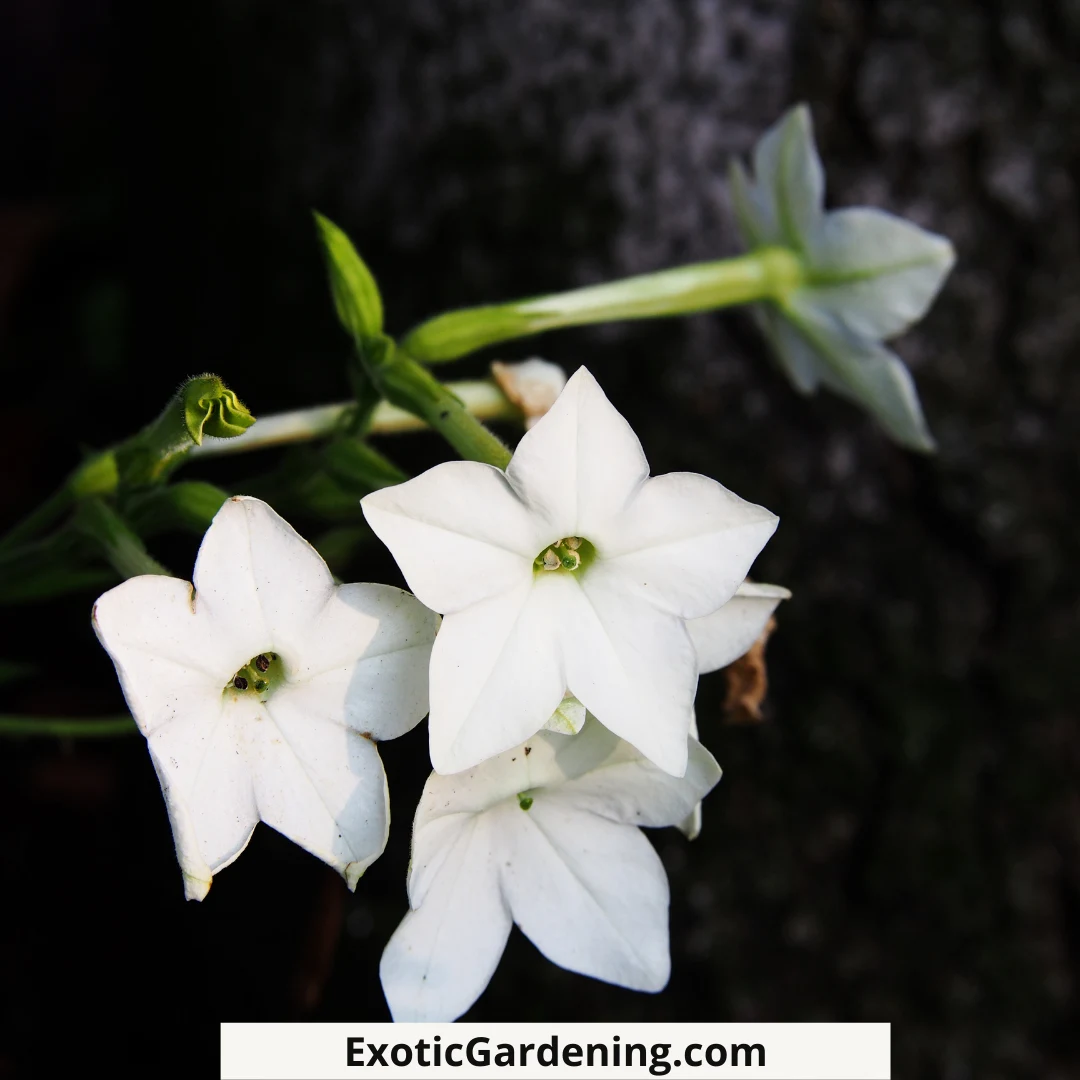
Illuminating Your Garden with Light-Colored Flowers: Day and Night Elegance
In the enchanting world of gardens, light-colored flowers are like delicate stars that twinkle both in the daylight and under the moon's soft radiance.
These blossoms add a touch of elegance and versatility to your outdoor space, making your garden a delight to behold whether the sun is high in the sky or the night has cast its spell.
Day and Night Borders:
Mixing light-colored flowers with a few brightly hued impatiens, as well as some white varieties for that moonlit effect, creates a perfect border that dazzles during the day and takes on a serene charm as the night unfolds.
These flowers serve as a living canvas that transitions seamlessly from daylight vibrancy to nighttime tranquility.
It's a visual masterpiece that transforms your garden into a work of art, both day and night.
The Allure of White Night Blooming Shrubs:
In the late fall and early winter, when the days grow shorter and the nights longer, a lovely white night blooming shrub from the tropics called Boovardia Longiflora comes into its own.
This exquisite plant is an ideal addition to your night blooming garden, and its snowy blooms seem to come alive under the moonlight.
The contrast between the dark, wintry nights and the luminous blossoms creates a scene that's nothing short of magical.
Tropical Elegance Indoors:
However, since Bouvardia longiflora is a tropical plant, it may be more suited to indoor gardening or greenhouse gardening, unless you are fortunate enough to have warm fall evenings in your region.
Bringing this tropical beauty indoors allows you to enjoy its enchanting blooms even during the chilliest of nights, creating a warm and inviting atmosphere within your home.
Companions in Tropical Night Blooming Splendor:
Bouvardia longiflora isn't the only star in the tropical night blooming garden.
Other similar tropical night bloomers like Valeriana officinalis, Nicotiana alata, and Gardenia Radicands also share the gift of nocturnal beauty.
These plants, with their exotic blooms and fragrances, infuse your garden with an air of mystery and romance.
Start Your Tropical Night Blooming Garden:
As the fall season settles in, and Halloween approaches, why not take the plunge and embark on the journey of creating your own tropical night blooming garden?
All it takes is a big pot and a sense of wonder.
These blooms, with their ability to shine even in the darkest of nights, are the perfect Halloween surprise for your outdoor space.
What could be more enchanting than flowers that come to life in the moonlight, adding a touch of magic to your garden's twilight hours?
Closing the Curtain on a Night Blooming Halloween Garden: Where Moonlight Meets Magic
In the enchanting tapestry of night blooming Halloween gardens, we've uncovered the secrets of plants that come alive under the cloak of darkness.
From the bewitching "Queen Of The Night" to the fragrant allure of night blooming Jasmine, and the luminous water lilies that dance under the moonlight, these botanical wonders have added an air of mystery and magic to our outdoor sanctuaries.
But as we conclude our journey, we must address a question that lingers like a whisper in the night – why are night blooming flowers generally white?
The answer lies in their moonlit allure.
White flowers, with their radiant petals, reflect the moonlight, creating an otherworldly glow that complements the eerie charm of Halloween.
These blossoms, like ethereal spirits, emerge from the darkness, enchanting all who encounter them.
So, as you embark on your own night blooming Halloween garden adventure, remember that it's not just about the blooms; it's about the enchantment they bring under the spell of the night.
With every petal that unfurls in the moonlight, your garden becomes a realm of magic, a place where the ordinary transforms into the extraordinary, and where Halloween surprises come alive amidst the flowers that glow in the dark.
Flowering Tropical Plants
How To Grow Tacca To Be A Successful Bloomer
The black flowers intrigued me, but the bat plant comes in many colors - brown, white and even green! Learn how to grow tacca from seed to bloom!
Amorphophallus Titanium: Life Cycle And Facts About The Corpse Flower
Learn about the life cycle of the Amorphophallus titanium as well as how to propagate it and some fun facts about this unique corpse flower.
Introducing Brugmansia: A Superior, Fragrant, Nocturnal Plant
Brugmansia trees are highly fragrant, night blooming plants with trumpet shaped flowers. Learn how to care for your brugmansia.
How To Care For Holiday Plants
Have you ever wondered how to care for holiday plants such as the Poinsettia or the Christmas Cactus? If so, then check out this holiday plant care guide
Zantedeschia aethiopica Green Goddess
Learn how easy it is to grow Zantedeschia althiopica Green Goddess from seed by using the damp paper towel method plus seed to bloom time.
How To Grow Heliconia
Learn how to grow Heliconia. Proper plant care is important to keeping your Heliconia healthy and thriving.
Plumeria: The Lei Flower Is A Fragrant, Easy To Grow Houseplant
Learn how to care for your Plumeria in ground and in containers. Because of the winter dormancy period it is ideal for summer containers.
Growing Tropical Plants
The key to successfully growing tropical plants is learning about them. Growing tropical plants is easy once you know their basic needs.
7 Sure Fire, Proven Steps For Successful Orchid Care
Successful orchid care is pretty easy once you understand the seven basic steps the plant needs to thrive in your home environment.
How To Grow Enormous Tropical Bulbs In Containers
Learn how to successfully grow tropical bulbs in containers. Regardless of where you live, there are reasons to grow in containers.
Easy Exotic Houseplants: Tropicals That Thrive Indoors in Containers
Tropical plants are the most beautiful, easy to grow indoor houseplants. Start growing exotic houseplants today that fruit and flower!
Coral Vine (Antigonon leptopus): A Beautiful Yet Invasive Climbing Vine
Explore the allure and challenges of Antigonon leptopus, a captivating climbing vine, and its impact on local ecosystems.
Suggested Reading: Two Great Books On Tropical Ornamentals
Learn about two books on tropical ornamentals. Breeding Ornamental Plants and Tropical Ornamentals are a must read for those who love plants.
How To Grow Beautiful, Delicate Tibouchina
Tibouchina are beautiful but delicate plants with gorgeous purple flowers and a velvet like foliage. They can be bushes or vines.
How To Grow Mallows
Learn how to grow mallows, a Malvaceae family which includes some of the most popular plants for the home garden, Hibiscus.
Ophrys
Ophrys are a rare group of terrestrial Orchids that grow in the wild and look like insects, especially bees, hence their common name.
Flowering Trees For Fragrance And Beauty
Flowering trees add beauty and fragrance to the garden. There are ones for tropical climates, cold climates and even indoor gardens.
Expert Advice On How To Grow Beautiful Allamandas
Allamandas come in a range of colors, are easy to grow and do well in containers. They also overwinter well indoors in cold climates.
Expert Advice On How To Grow Oleanders
Learn how to grow Oleanders as well as propagation methods. Learn about the toxicity of this plant as well.
Rafflesia Arnoldii
Rafflesia arnoldii produces the largest flower in the world yet this colorful, but strange plant is rare and grows on the rainforest floor.
Tropical Plants In Cold Climates: Overwinter Tropical Plants Or Start Over Each Year From Seed
Tropical plants grown in cold climates look great during the summer outside but many make great houseplants in the winter.
How To Grow Tropical Plants
Growing tropical plants - also known as houseplants - indoors is fun and enjoyable plus many of them clean the indoor of pollutants.
It is easy to grow exotic looking plants that produce tropical fruit and colorful flowers in a pot in your living room or office.
Many of these plants are easy to start from seed and I share with you five plants that I recommend for indoor growing.
I also share with you why growing your own tropical fruit saves money.
In this video you will learn:
How to bring tropical plants indoors at the end of summer
How to grow tropical plants indoors
How to protect and overwinter tropical plants outdoors in cold climates
How to propagate tropical plants
How to water tropcial plants
How to grow topical plants in a greenhouse

